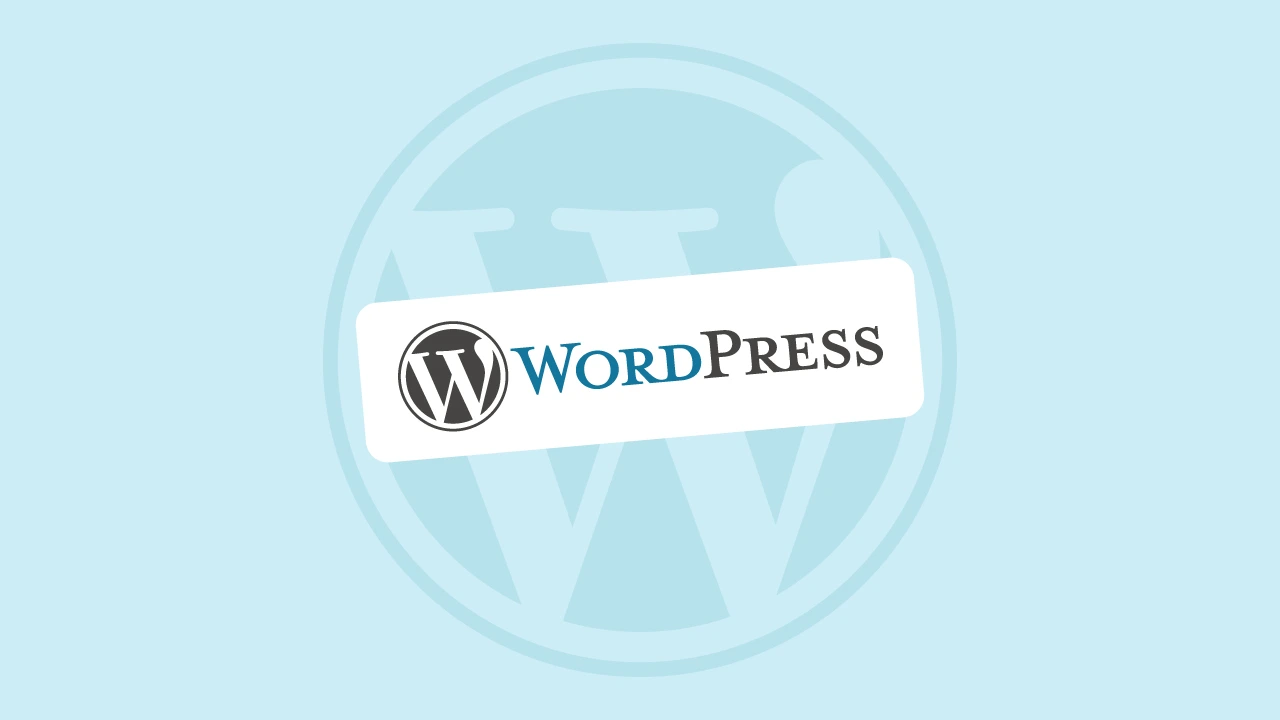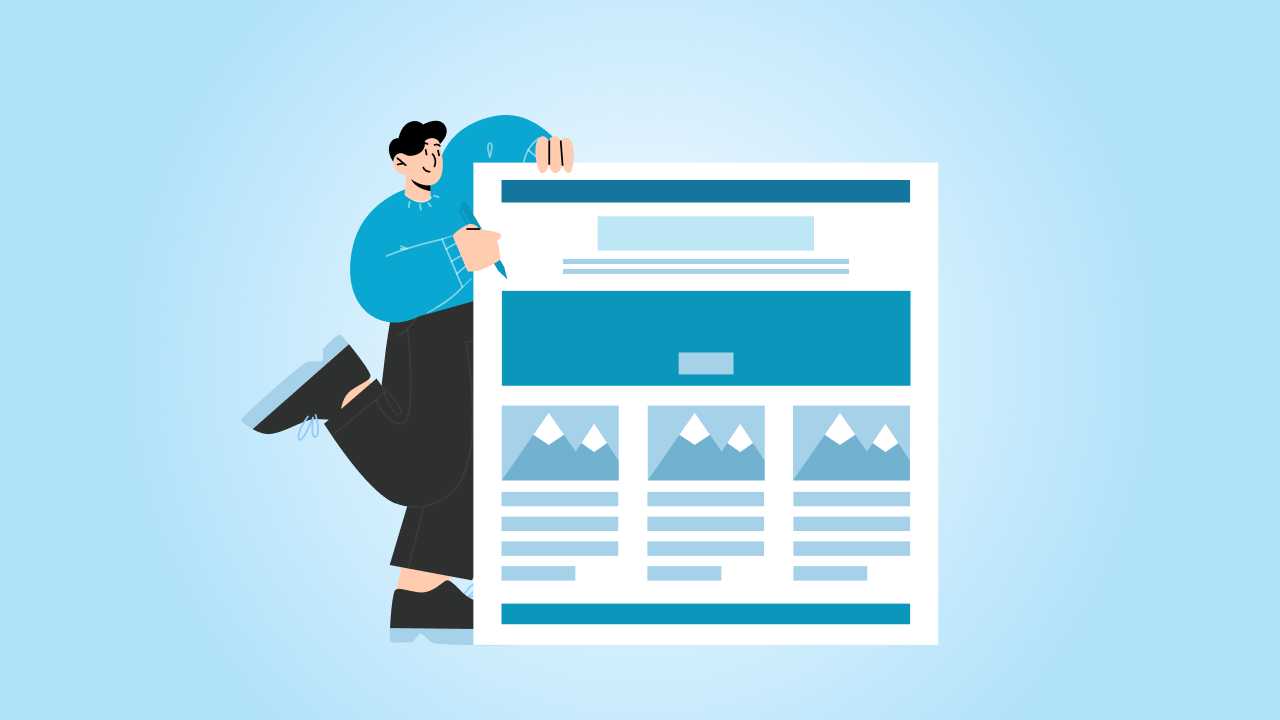If you think having a website is enough to magically bring customers to your doorstep, then you couldn’t be more wrong. Honestly, a website is very much similar to a storefront—just because it exists doesn’t mean people will walk in.
To attract visitors, keep them engaged, and convert them into customers, your website needs to be optimized.
So Why Should You Care About Website Optimization?
Let me take this opportunity to explain why optimizing your website isn’t just a nice-to-have—it’s a necessity:
- Speed Matters: More than 50% of users leave a website if it takes longer than 3 seconds to load. If your site is slow, you are losing potential customers before they even see your content.
- Better User Experience (UX): If visitors struggle to navigate your site or find what they are looking for, they will leave. A well-optimized site keeps users engaged and encourages them to take action.
- Higher Search Rankings (SEO): Google prioritizes fast, well-structured, mobile-friendly websites. Optimizing your site helps you rank higher in search results and drive more organic traffic.
- More Conversions, More Revenue: A website that loads quickly, is easy to navigate and has clear calls-to-action (CTAs) is more likely to turn visitors into paying customers.
- Mobile Optimization is Non-Negotiable: With over 60% of global web traffic coming from mobile devices, your website must be mobile-friendly to stay competitive.
What You Will Learn in This Guide
In this beginner-friendly guide, we will cover:
- Performance Optimization – How to speed up your website for a better user experience.
- Search Engine Optimization (SEO) – Best practices to improve your rankings.
- Mobile Optimization – Making sure your site looks great and functions well on all devices.
- User Experience (UX) & Accessibility – Enhancing design, navigation, and readability.
- Conversion Rate Optimization (CRO) – Strategies to turn visitors into customers.
By the end of this guide, you will have a clear-cut idea as to how to improve your website’s performance, attract more traffic, and create a better experience for your visitors.
⏰ 60-Second Summary
- Website optimization is the process of improving speed, usability, and effectiveness to enhance user experience, search rankings, and conversions.
- Key areas of optimization include performance (speed), SEO, mobile-friendliness, user experience (UX), and conversion rate optimization (CRO).
- Steps to optimize your website:
- Audit your site with tools like Google Analytics & PageSpeed Insights.
- Improve speed by compressing images, enabling caching, and using a CDN.
- Enhance mobile usability with responsive design and fast-loading elements.
- Optimize SEO by improving meta tags, content structure, and internal links.
- Refine UX & accessibility with clear navigation, CTAs, and readability.
- Track performance and A/B test changes to boost conversions.
- Common mistakes to avoid: Ignoring mobile users, slow pages, poor navigation, skipping SEO basics, and failing to track website data.
- Website optimization is an ongoing process—start with small improvements, test regularly, and refine based on analytics for long-term success.
What is Website Optimization?
In simple terms, website optimization is the process of improving your website’s performance, usability, and overall effectiveness to ensure a better experience for visitors.
It involves fine-tuning different aspects of your website—such as speed, SEO, design, and user experience—to achieve specific goals, whether that’s ranking higher on Google, increasing conversions, or simply keeping visitors engaged.
📌 Example: Let’s say you walk into a store where the lights are dim, the aisles are cluttered, and the checkout process is awfully tedious. Would you stay and shop? Probably not.
Now, apply the same logic to websites.
If your website is equally slow, hard to navigate, or not user-friendly, then visitors most probably will leave before you get a chance to show them what you got.
The Core Goal of Website Optimization
Basically, website optimization is about:
- Enhancing Performance – Leading performance-based SEO and making sure your site loads quickly and runs smoothly.
- Improving Usability – Ensuring visitors can easily find what they are looking for.
- Boosting Effectiveness – Aligning your website with your business goals, whether that’s generating leads, selling products, or building brand awareness.
Who Benefits from Website Optimization?
- Businesses: A well-optimized website attracts more customers, improves conversions, and builds credibility. Whether you are a small business or a large corporation, a fast and user-friendly website can significantly impact your bottom line.
- Bloggers & Content Creators: If your blog takes forever to load or isn’t mobile-friendly, visitors will leave before they even read your content. Optimization helps improve traffic, engagement, and search rankings.
- eCommerce Stores: Every second of delay in page load time can lead to lower sales and higher cart abandonment rates. Optimizing your site means faster checkout processes, smoother navigation, and higher revenue.
In short, website optimization isn’t just a technical task—it’s a strategy to improve visitor experience, boost visibility, and drive business growth.
Slow load times and poor performance can drive visitors away. Let our experts optimize your website for speed, user experience, and SEO.
The Key Pillars of Website Optimization
Website optimization isn’t just about making a site look good—it’s about making it perform better, rank higher, and convert visitors into customers. To achieve this, there are five main areas you need to focus on:
1. Performance Optimization (Speed & Loading Times)
🔍 Did You Know? that 53% of users leave a website if it takes longer than 3 seconds to load?
Speed isn’t just about convenience—it directly affects bounce rates, conversions, and even SEO rankings. A slow site frustrates users, reduces engagement, and negatively impacts your search engine rankings.
How to Measure Website Speed
Before optimizing, you need to assess your site’s current speed. Use these free tools:
- Google PageSpeed Insights – Provides performance scores and suggestions for improvement.
- GTmetrix – Offers a detailed breakdown of page speed and optimization tips.
- Lighthouse (Chrome DevTools) – A built-in browser tool to audit site performance.
Quick Wins to Improve Website Speed
- Reduce Image Size: Use compression tools like TinyPNG or WebP format to keep images lightweight.
- Enable Caching: Caching stores static files so that returning visitors experience faster load times.
- Use a Content Delivery Network (CDN): CDNs distribute your site’s content across multiple servers worldwide, reducing load times for users in different locations.
📖 Also Read: How to Improve eCommerce Website Performance
2. Search Engine Optimization (SEO)
A beautiful website is useless if no one can find it. Search Engine Optimization (SEO) ensures your site appears higher in Google search results, bringing in organic traffic without relying on paid ads.
Core Elements of SEO
- Technical SEO – Optimizing site infrastructure:
- Create an SEO-friendly site structure (clear navigation, internal linking).
- Submit sitemaps to Google Search Console.
- Ensure mobile-friendliness and fix crawl errors.
- On-Page SEO – Optimizing content and pages:
- Use targeted keywords naturally in titles, headings, and content.
- Optimize meta titles and descriptions to improve click-through rates.
- Structure content using proper headings (H1, H2, H3) for readability.
- Off-Page SEO – Building website authority:
- Get backlinks from reputable sites to boost domain authority.
- Engage in guest blogging and social media sharing.
- Build trust with positive online reviews and citations.
3. Mobile Optimization
With over 60% of web traffic coming from mobile devices, having a mobile-friendly website is no longer optional—it’s essential. Google even uses mobile-first indexing, meaning it ranks websites based on their mobile version first.
Best Practices for Mobile Optimization
- Responsive Design: Ensure your site adjusts seamlessly to different screen sizes.
- Touch-Friendly Elements: Buttons and links should be easy to tap with fingers.
- Fast Mobile Load Times: Avoid heavy scripts, use AMP (Accelerated Mobile Pages), and optimize images.
Tools to Check Mobile Usability
- Google Mobile-Friendly Test – Checks if your site works well on mobile.
- BrowserStack – Lets you test your site on different devices and browsers.
4. User Experience (UX) & Accessibility
Even if your site is fast and ranks well on Google, poor user experience (UX) can drive visitors away. A well-optimized site is easy to navigate, visually appealing, and accessible to all users, including those with disabilities.
Key Elements of Good UX
- Simple Navigation: A clean, intuitive menu helps users find what they need quickly.
- Clear Call-to-Actions (CTAs): Buttons should stand out and guide users toward the next step (e.g., “Sign Up” or “Buy Now”).
- Readable Fonts & Colors: Use high contrast for text readability and ensure font sizes are appropriate.
- Faster Interactivity: Reduce layout shifts and improve page stability using best practices like Lazy Loading for images.
5. Conversion Rate Optimization (CRO)
Traffic alone won’t grow your business—you need to convert visitors into customers. That’s where Conversion Rate Optimization (CRO) comes in.
Why CRO Matters
A well-optimized website increases:
- Lead Generation – More visitors signing up for newsletters or filling out forms.
- Sales & Revenue – Higher conversion rates mean more paying customers.
- User Engagement – Visitors stay longer and interact more with your content.
How to Improve Conversions
- A/B Testing: Compare different versions of a webpage to see which performs better.
- Better Landing Page Design: Clear messaging, fast load times, and compelling visuals boost conversions.
- Persuasive Copywriting: Highlight benefits, use social proof, and include strong CTAs.
- Use Data to Optimize: Track visitor behavior with tools like Google Analytics and Heatmaps (Hotjar, Crazy Egg).
How to Optimize Your Website Step-by-Step
Now that you understand the key pillars of website optimization, it’s time to take action. Follow this step-by-step approach to start optimizing your website for better performance, visibility, and conversions.
1. Audit Your Website
Before making changes, you need to assess your website’s current performance. A website audit helps you identify speed issues, SEO gaps, and UX problems.
Tools to Audit Your Website
- Google Analytics – Tracks visitor behavior, bounce rates, and conversion metrics.
- Google PageSpeed Insights – Measures website speed and provides optimization suggestions.
- SEMrush / Ahrefs – Identifies SEO errors, broken links, and keyword opportunities.
- Lighthouse (Chrome DevTools) – Audits performance, accessibility, and SEO in one place.
💡 Pro Tip: Run an audit at least once a quarter to keep your website optimized.
2. Improve Page Speed
A slow website can kill conversions and hurt SEO rankings. Follow these strategies to make your site load faster:
- Compress Images: Use tools like TinyPNG, ImageOptim, or WebP format to reduce image file sizes.
- Enable Lazy Loading: Load images and videos only when they are needed, reducing initial page load time.
- Minimize HTTP Requests: Reduce the number of scripts, fonts, and third-party plugins that slow your site.
- Use Browser Caching: Store static elements like logos and CSS files so repeat visitors load pages faster.
- Optimize Code: Minify HTML, CSS, and JavaScript files using tools like Autoptimize (WordPress) or Cloudflare.
3. Enhance Mobile Usability
With Google’s mobile-first indexing, your website’s mobile experience affects your search rankings. Make sure your site is fully responsive and easy to navigate on smaller screens.
How to Improve Mobile Usability
- Use a Responsive Design: Ensure your website adapts to different screen sizes.
- Optimize Buttons & Text: Make sure buttons are large enough to tap and text is readable without zooming.
- Reduce Pop-Ups: Intrusive pop-ups on mobile devices frustrate users and can hurt your rankings.
- Test Mobile Performance: Use Google’s Mobile-Friendly Test and check real devices using BrowserStack.
💡 Pro Tip: Always preview your website on both Android and iOS devices before publishing changes.
4. Optimize for Search Engines (SEO)
SEO helps increase your website’s visibility on Google and other search engines.
Key SEO Improvements
- Optimize Meta Titles & Descriptions: Ensure each page has a unique, keyword-rich title and description.
- Use Proper Headings (H1, H2, H3): Structure your content so search engines and users can scan it easily.
- Internal Linking: Link to related content on your site to boost engagement and improve SEO.
- Fix Broken Links: Use tools like Ahrefs or Screaming Frog to detect and remove dead links.
- Submit a Sitemap: Upload your XML sitemap to Google Search Console for faster indexing.
💡 Pro Tip: Target long-tail keywords (e.g., “best website optimization tips for beginners, best website optimization services”) for easier rankings and better traffic.
5. Refine User Experience (UX) & Accessibility
A well-optimized website isn’t just fast and SEO-friendly—it also delivers a great user experience.
How to Improve UX & Accessibility
- Improve Navigation: Make it easy for users to find what they need in 3 clicks or less.
- Use Clear Call-to-Actions (CTAs): Guide visitors with visible, action-driven buttons like “Get Started” or “Shop Now.”
- Ensure Readability: Use contrasting colors, large fonts, and proper spacing for a comfortable reading experience.
- Add Alt Text to Images: Helps visually impaired users and improves image SEO rankings.
- Fix Layout Shifts: Reduce unexpected content movement to avoid a poor Core Web Vitals score.
💡 Pro Tip: Use Hotjar or Crazy Egg heatmaps to analyze how users interact with your site and spot UX issues.
6. A/B Test and Track Progress
Optimization is an ongoing process. Regular testing and analysis help you understand what’s working and what needs improvement.
How to Measure & Improve Website Performance
- A/B Testing: Compare two versions of a page to see which one performs better (Google Optimize, VWO).
- Track Key Metrics: Monitor bounce rates, page load times, and conversion rates in Google Analytics.
- Heatmaps & Session Recordings: Use Hotjar to see where users are clicking and where they drop off.
- Adjust & Improve: Based on the data, tweak elements like CTA placement, content structure, and design.
💡 Pro Tip: Test one change at a time (e.g., button color, headline, or page layout) to see which factor impacts conversions the most.
Common Website Optimization Mistakes to Avoid
By now, you know how to optimize your website step by step—but what about the mistakes that could undo all your hard work?
To be honest, many websites struggle with the same common issues that slow them down, hurt their rankings, and frustrate visitors.
Let’s go over these mistakes so you can avoid them and keep your website performing at its best.
1. Ignoring Mobile Users
If your website isn’t mobile-friendly, you are alienating more than half of your visitors. Mobile users expect a fast, easy-to-navigate experience, and if they don’t get it, they will leave.
| Common Mistakes | How to Fix It |
|---|---|
|
|
💡 Pro Tip: View your website on multiple devices (smartphones, tablets, different browsers) to catch any display issues.
2. Overloading Pages with Large Media Files & Unnecessary Plugins
Adding high-resolution images, videos, and fancy animations might make your site look great and fancy, but it can also slow it down dramatically. Similarly, installing too many plugins (especially on WordPress sites) can bloat your website and cause performance issues.
| Common Mistakes | How to Fix It |
|---|---|
|
|
💡 Pro Tip: Run your website through GTmetrix or PageSpeed Insights to identify which elements are slowing it down.
3. Poor Navigation & Slow-Loading Pages
Imagine walking into a store and not knowing where anything is. Confusing website navigation and slow page speeds drive users away. If visitors can’t find what they need quickly, they won’t stick around.
| Common Mistakes | How to Fix It |
|---|---|
|
|
💡 Pro Tip: Use Google Analytics to track user behavior—if visitors are leaving quickly, it may be a sign your navigation is too confusing.
4. Skipping SEO Fundamentals
You don’t need to be an SEO expert, but neglecting basic SEO practices can prevent your website from getting discovered.
Search engines prioritize well-structured, optimized sites, so skipping these steps means you are missing out on free organic traffic.
| Common Mistakes | How to Fix It |
|---|---|
|
|
💡 Pro Tip: Install Yoast SEO (WordPress) or use Google Search Console to check for SEO issues.
5. Not Tracking or Analyzing Website Data
If you are not monitoring your website’s performance, how will you know what’s working and what needs improvement?
Many website owners skip analytics, leaving them in the dark about their visitors, traffic sources, and conversions.
| Common Mistakes | How to Fix It |
|---|---|
|
|
💡 Pro Tip: Even small changes, like modifying a CTA button color or adjusting a headline, can improve conversion rates—but you need data to measure the impact.
Conclusion
Optimizing your website isn’t a one-and-done task—it’s an ongoing process. As technology evolves, search engine algorithms change, and your customers’ expectations grow, continuous improvements are necessary to keep your website performing at its best.
The good news?
You don’t have to do everything at once. Small, consistent improvements can lead to significant results over time.
Website optimization doesn’t have to be complicated—but doing nothing will cost you traffic, rankings, and conversions. So start with small improvements, track your results, and keep refining over time.
Ready to optimize your website? Pick one action from this guide and implement it today. The sooner you start, the sooner you’ll see results.
Your website is a powerful tool—make sure it’s working for you, not against you!
Let our experts fine-tune your website for better performance and higher conversions.





